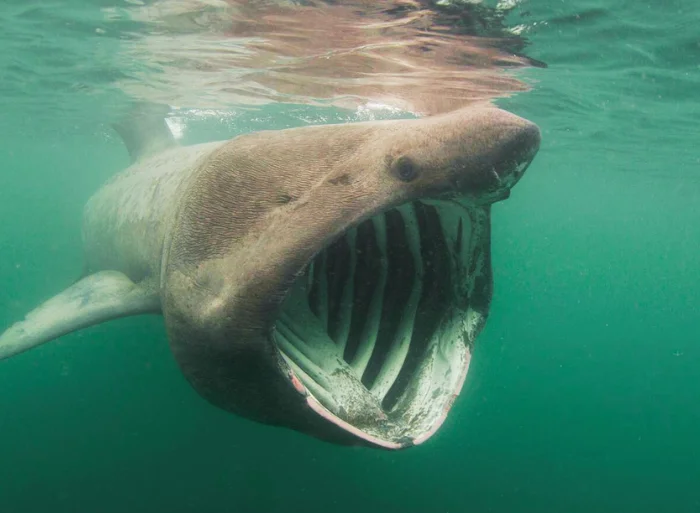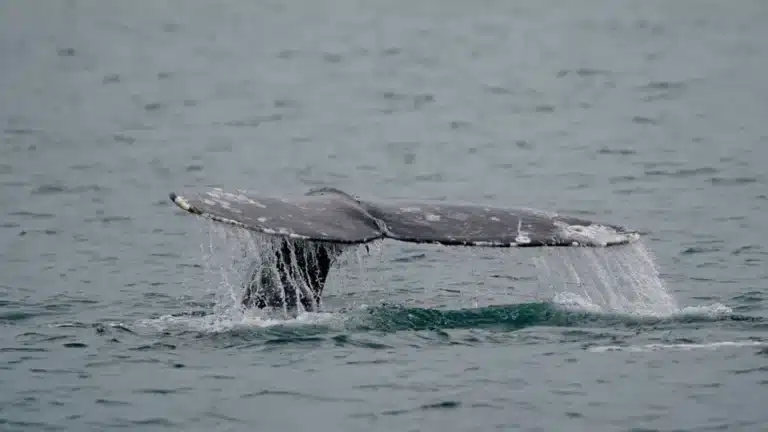Basking Shark Data Captured By Boat Strike: Interesting Revelations

In Kerry County, within the province of Munster, southwestern Ireland, a basking shark was recorded by the researchers. Details were gathered with a mini camera after a boat strike under the water.
The actions of an endangered basking shark were recorded by the camera that was implanted upon a seven-metre female basking shark. Off the Kerry coast, the boat strike revealed some interesting unveiling about the animals that were of great insight for the sea analysts.
(Also read: Coral Reefs are Undergoing the Fourth Global Bleaching Event, Says Global Monitoring Body)
A collaborative team of Irish scientists were on their mission to study basking shark habitat and eating habits, how fast they swim, what direction they would travel and how they react in certain circumstances.
Nick Payne, Assistant Professor at Trinity College Dublin’s School of Science, assured that the mini camera produces high-definition images, indicating that the data gathered is of crystal clear view. Basking sharks are of great interest, being the endangered species, for gaining important discernment into the animal’s movements.
Payne added that they could use this information for seeing little actions like “how often it beats its tail”. He predicted it to be like a pedometer.
The researcher further praised the device that is installed over the body of the shark. The team has been doing it for the past several years to study the basking sharks more closely.
The device is planned automatically to pop off the animal body after six hours of boat strike. The natural taking off of the camera is to review the collected data in the device.
Payne stated the details of what happened after the boat hit in April. When one of the basking sharks was hit by the boat, while it was searching for its food, new data was captured.
He cited it as a “grim viewing”. Four to five hours of video was recorded before the strike. The video disclosed a behaviour change, which was dramatic.
When the boat collided, the animal was trying to feed on the surface. It is considered as a normal shark behaviour every day. Immediately after the boat hit it, it responded differently. It ran quickly to the bottom of the sea, about 40 metres down.
The speed with which it ran towards the deep waters was amazing. It was a “drastic change in the behaviour”, as Payne put it. Afterwards, the camera did not witness it feeding for the remaining day.
What are Basking Sharks?
Basking sharks are the second largest animal in the waters after the whale shark. It falls in the category of plankton-eating sharks, similar to megamouth sharks. The usual length of the animal is up to 7.9 metres. Other popular names for it include sailfish, elephant shark, sunfish, and bone shark.
The risk minimization of their living habitat remains the top priority of sea researchers. The Irish government announced the opening of the first National Marine Park in 2022, as per the Wildlife Act. It can safeguard 70,000 acres of sea and land along County Kerry’s coast.
The researchers elucidated that this was the first-ever recorded reaction of basking sharks, especially for the boat smacks. The impact of vessel strikes would help observe the sharks’ retaliation or safety measures that the animal takes in such situations. It would help the team to reduce risks for these sea animals.
Current research is part of the National Park’s plan so that the foraging behaviour of basking sharks is probed in depth. It would help in comprehending how they correspond to environmental factors.
The ultimate fate of the animal after the vessel strike and how it managed to come up to the surface later is still unknown. However, the severe impact is still intriguing for the researchers.






